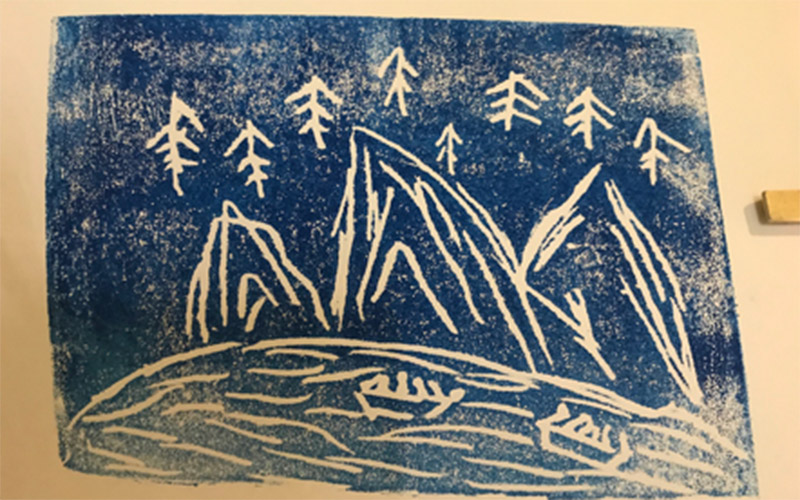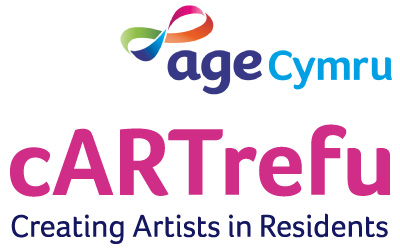
Mono-printing is a very quick and simple process. It can be delivered in two different ways. Additive: Drawing patterns, images or text onto an inked surface, then laying paper on the top to pick up the design,
Or subtractive:
Apply the surface face down on the inked surface and then drawing out the design on the back of the paper whilst it’s in position.
As the process is very quick, it’s useful to encourage residents to think fast, and also to start thinking about the reverse process – if they want to write text that it must be backwards etc.
Access to sink, aprons for residents to keep the acrylic ink off clothes!
for the subtractive process at stage 2. Lay the paper down on the inked surface and then draw on the top.
notes: wash the equipment as soon as possible after use.
Once you’ve tried the additive method with the residents, try the subtractive method.
In addition, it’s lovely to make a series of cards for Christmas, Easter etc.
Once you have your printing inks and rollers then you can try out other methods of printing – potato prints for pattern printing, lino (this can be more difficult with older people as the tools are much harder to use), sheets of polystyrene which you can draw onto and make one off prints. Mono-printing is just the starting point.
Ways to adapt for less able residents:
Support with the drawing on the inked plate may be required for those less able, looking to copy images if they need some ideas for images to draw.
Ways to adapt from group to individual and vice versa:
If working with a group and working as the sole facilitator, give the residents paper and pencils for drawings as well to work up their ideas so that you can concentrate on printing with one resident at a time.
